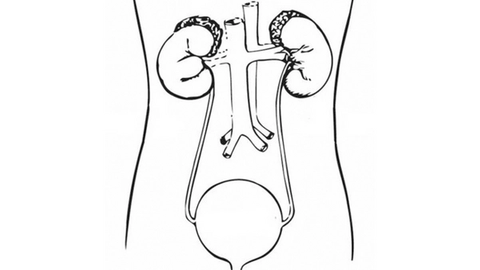The Targeted Pulse: Discover the Latest From ODAC and Recent Treatment Updates in Myeloma, NSCLC, and Prostate Cancer
Durcabtagene autoleucel shows high response rates in R/R multiple myeloma; olomorasib plus pembrolizumab demonstrates efficacy in KRAS G12C-mutated NSCLC; and the combination of talquetamab, daratumumab, and pomalidomide achieves durable responses. We also cover the FDA’s ODAC vote against checkpoint inhibitors for esophageal cancer.
Want to test your knowledge on the latest oncology news? Check out this week’s quiz!

Transformative CAR T-Cell Therapy Offers New Options in Multiple Myeloma
Durcabtagene autoleucel (PHE885) demonstrated high overall response rates in patients with relapsed/refractory (R/R) multiple myeloma and exhibited a manageable safety profile. In the trial, investigators evaluated 2 doses of the BCMA-directed chimeric antigen receptor T-cell therapy: 5 x 106 and 10 x 106. These findings from the interim phase 2 study (NCT04318327) were presented at the 2024 International Myeloma Society Annual Meeting.
“While [the study] is not designed to compare the 2 groups, there is the impression that there was a higher grade of adverse events present in the 10 x 106 vs the 5 x 106 cohorts, [with] most deaths occurring more than 30 days after infection and progressive disease,” said Andrew Spencer, MD, professor at Alfred Hospital-Monash University, Melbourne, Australia, and study presenter. “[There] were patients who died prior to the initial evaluation time point or had inconsistencies in imaging techniques before and after infusion, which confounded the interpretation of the results,” he stated.

An Insider Look at the Pros and Cons of Radiopharmaceuticals in Prostate Cancer
In this article, Jeffrey Y.C. Wong, MD, radiation oncologist and co-director of the Center for Theranostic Studies at City of Hope, discusses the progress in precision treatments for prostate cancer and the ongoing challenges related to radiopharmaceuticals. Radiopharmaceuticals are formulated to target cancer cells with radiation, reducing harm to healthy tissues. However, improving widespread access, administering these treatments at earlier disease stages, and combining treatments with radiopharmaceuticals remain challenges.
“These new radiopharmaceuticals are a big advance in the treatment for prostate cancer. Prostate cancer is a relatively radio-sensitive malignancy, and so it makes sense to develop these agents for the treatment of prostate cancer. We do know that these agents have a significant impact in reducing prostate-specific antigen levels, helping reduce symptoms, and [preventing or delaying] progression of disease, but the agent alone is probably not enough, and we need to find better ways to use these agents,” Wong told Targeted OncologyTM in an interview.

Olomorasib/Pembrolizumab Shows Promising Response Rates in NSCLC
Olomorasib (LY3537982; 50 mg or 100 mg) plus pembrolizumab (Keytruda) showed favorable overall response rates in the first line setting for patients KRAS G12C–mutated metastatic non–small cell lung cancer, regardless of PD-L1 expression. These data are from the phase 1/2 LOXO-RAS-20001 study (NCT04956640) and presented at the 2024 American Society of Clinical Oncology Breakthrough meeting.
“Olomorasib, a highly selective second-generation KRAS G12C inhibitor, has demonstrated a favorable safety profile and promising efficacy across multiple tumor types,” said Yutaka Fujiwara, MD, PhD, during a presentation of the data. “Given these promising results, we are currently conducting a global registrational trial called SUNRAY-01 [NCT06119581].”
Fujiwara is primary director at the Aichi Cancer Center in Nagoya and director of Mitsui Memorial Hospital in Tokyo, Japan.
“My Vote Was No”: Unpacking the FDA’s ODAC Decision on Esophageal Cancer
The FDA’s Oncologic Drug Advisory Committee (ODAC) voted against using checkpoint inhibitors in patients with metastatic or unresectable esophageal squamous cell carcinoma with PD-L1 expression of less than 1. The vote was 11 to 1.
“My vote was no,” said ODAC member Hanna Sanoff, MD, MPH, University of North Carolina at Chapel Hill. “Given the completely overlapping survival curves and even some suggestion of no benefit at all, even potential harm, I did not find sufficient evidence. Despite the small sample sizes, I think the fact that effective treatment is statistically modified by PD-L1 [expression] is quite compelling.”
Talquetamab Combo Produced Deep, Durable Responses in R/R Multiple Myeloma
The combination therapy of talquetamab-tgvs (Talvey), daratumumab with hyaluronidase-fihj (Darzalex Faspro), and pomalidomide (Pomalyst) produced deep and durable responses in patients with R/R multiple myeloma. Updated data from the phase 1b TRIMM-2 study (NCT04108195) evaluating the combination were presented at the 2024 International Myeloma Society (IMS) Annual Meeting by Nizar Bahlis, MD.
“The deep and durable responses shown in these latest results from TRIMM-2 further support the potential of [talquetamab] in combination with [daratumumab and hyaluronidase-fihj], which has become a standard of care in multiple myeloma, and pomalidomide,” Bahlis said. “With high overall response rates seen across cohorts, this combination shows potential for significant disease control and survival in patients who have received multiple lines of prior therapy, including exposure to prior bispecific antibodies.”
Bahlis is associate professor at Arnie Charbonneau Cancer Institute, University of Calgary, Canada.
Thank you for joining us for this week’s Targeted Pulse. Look out for more recaps to come.
In case you missed it, here is last week’s Targeted Pulse.
Promising results from the anti–LAG-3/anti–PD-1 combo for melanoma, FDA approval of inavolisib for PIK3CA-mutant breast cancer, significant survival benefits from talazoparib and enzalutamide in prostate cancer, and the launch of the TWINPEAK trial for gastric cancers.
Read More